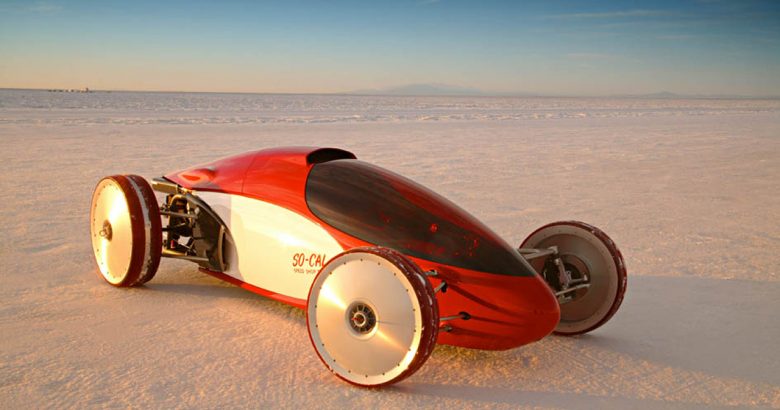
Belly Tank Racers
Have you ever seen those old pictures of curious, low-slung hotrods with aluminum, torpedo-shaped bodies? These are called “Belly Tank Racers” and they were built to break speed records in the car-crazy 1940s-50s. The body of these hotrods came from aluminum drop tanks, or “belly tanks”, that were common on WWII aircraft. The engines they had were generally hopped up versions of standard American car engines. Thanks to Suburban Chrysler of Ann Arbor, MI, a Chrysler, Dodge, Jeep, Ram dealer, for helping us with this article.
About belly tanks
Belly tanks were the spare gas tanks that were strapped to the bellies of airplanes. They were designed to hold the extra fuel needed to extend a plane’s flying range. Often, when a belly tank was empty the pilot would jettison it to reduce weight and air drag. After World War II ended, lots of belly tanks started to show up in scrap yards and hotrodders soon took notice. It wasn’t long before some used them to make race cars.
Two types
Some belly tank racers used a front engine design where the driver sat behind the engine. This configuration was necessary when using the smaller 165-gallon tanks from P-51 Mustangs. When hotrodders could get their hands on the larger 315-gallon tanks from P-38 Lightnings, they had enough room to put the engine behind the driver. This was the preferred configuration for those that wanted to use the really big engines such as big block V8s.
American engines
Most belly tank racers had American-built engines because of their availability to builders at the time. American engines were plentiful and they could be hopped-up to generate enormous horsepower. They weren’t light, however, and designers compensated by mounting the wheels out to the side of the belly tank. This gave the vehicle better stability.
Natural race tracks
Breaking speed records required long race tracks. Fortunately, mother nature helped out by supplying some spots in South Western part of the United States that were very flat and very large. These are the dry beds of prehistoric lakes and are located throughout California, Nevada and Utah. These salty, wide-open expanses are flat and glass-smooth. They’re perfect for high-speed runs in vehicles made to break land speed records.
The So-Cal Streamliner
One of the most famous belly tank racers is associated with Alex Xydias and his iconic So-Cal Speed shop. The So-Cal Speed shop was started in 1951 and it was responsible for some of the world’s early land speed records. They were the first to build hot rods that went 160, 170, 180 and 190 mph. In 1952, they built the “So-Cal-Streamliner” from the belly tank of a P-38 Lightning. Xydias managed to average 195 miles per hour in this belly racer and it made him famous.
The sunset of belly tank racers
At some point in the 1950s, belly tank racers fell out of favor for building land speed race cars. The newer designs were all built from the ground up and belly tanks gave way to custom shapes. Today belly tank racers are an important part of the pursuit of land speed records in the US.
Source: Suburban Chrysler of Ann Arbor, MI